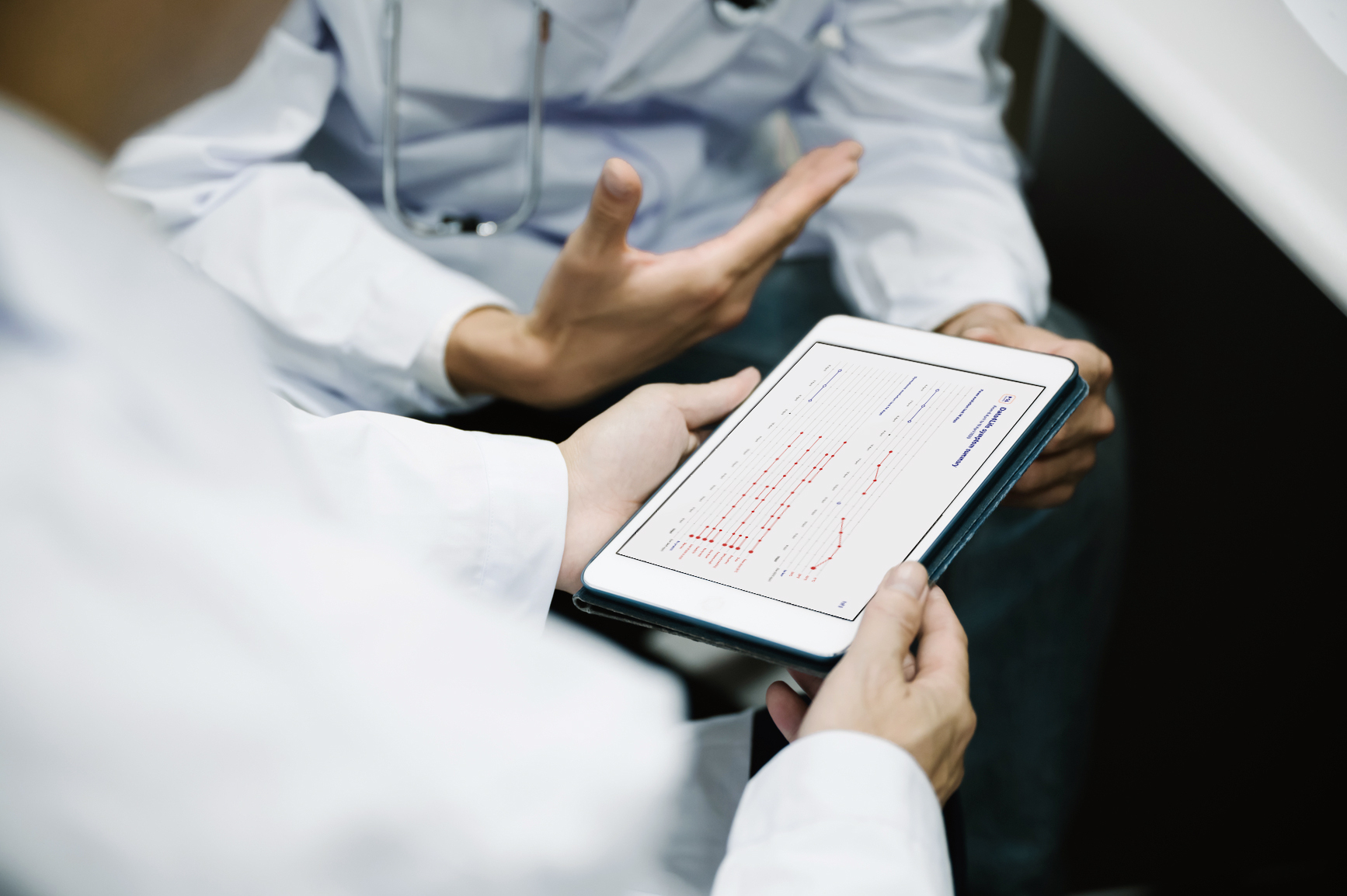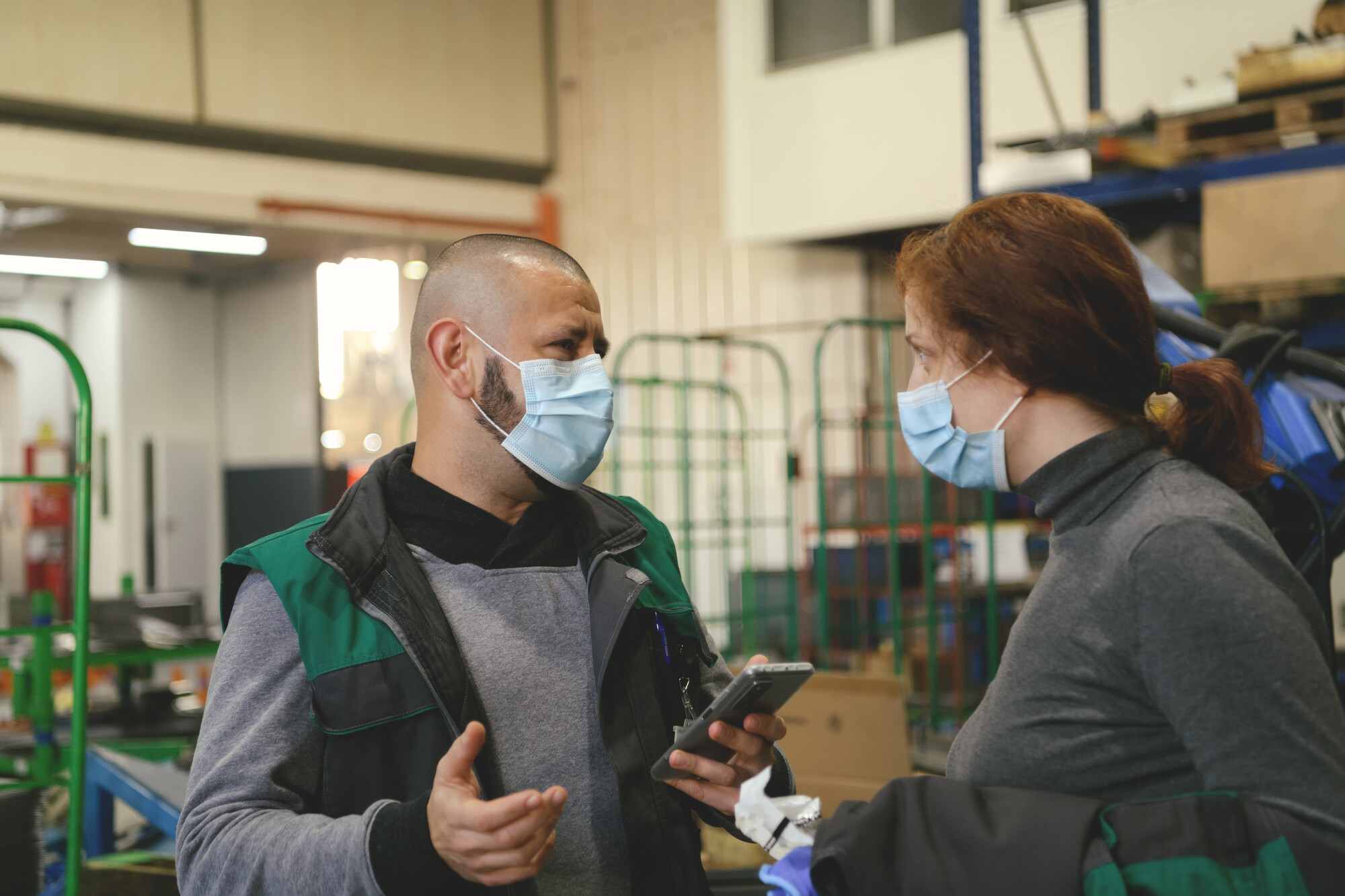A large untapped pool of data
Whether in the hospital, at the doctor’s office, or on the go – new health data is constantly being generated everyday. More and more people are using health apps, smartwatches, and other wearables in their free time. Next to medical tests and doctors’ assessments, health apps and wearables are important sources of data collection [1].
Data from smartwatches and healthcare apps
According to Accenture Consulting, one of the world's largest companies for management consulting and technology, 33% of Americans were already using wearables such as Apple or Android smartwatches in 2018. These devices collect information relating to vital signs and movement such as pulse rates and the number of steps taken per day. Corresponding apps provide initial analyses of the values and data measured. While these do not serve as medical indicators, they provide a general overview of personal fitness. Usually, this type of software can recognize patterns and deviations from the norm, providing information about health problems. If such information were to be collected on a long-term basis, for example in an electronic health file, it could be properly evaluated. This would not only be useful for the person wearing a smartwatch (or other wearable), but also for research. Many people are still unaware of how important it is to make health data from wearables available to researchers. Thanks to modern technology, people are recording useful data on a daily basis, and a wealth of information is already available. A Forsa study from 2019 shows that more and more people would be willing to donate data this type of data to medical research [2].USA embraces data donation
In the United States of America, various actors in healthcare have been working to increase willingness to donate data. Clearly their efforts have been successful, since a 2014 study in the USA revealed that 94% of the participants would donate health data to support scientific endeavors [3]. The respondents were especially interested in donating data to help cure diseases more quickly. An important prerequisite for this was that all data remains anonymous. However, anonymity was not the condition. A transparent approach to the use of donated data and detailed information on the different types of data donation are also essential.What do Germans think about data donation?
According to recent studies, most Germans are willing to donate data. Nearly 80 percent of the population said they would agree to donate their data for research purposes. In this context, the TMF (Technology and Methods Platform for Networked Medical Research) commissioned a Forsa survey with over 1,000 participants [4].Overview of survey results from summer 2019:- 79% of participants agreed to donate their health data for medical research purposes.
- 97% would support publicly funded research using their data, 17% would share their data with scientists from the industry and private companies.
- 73% agree to long-term use of their data following data donation (56% for an unlimited period and 17% percent for the next five years).
Data donation for COVID-19 research
In April 2020, Data4Life conducted a representative survey of 5,002 participants in Germany. The survey results showed that nearly two thirds (65%) of participants were willing to donate personal health data (e.g. pulse, fever, previous illnesses) and movement data (e.g. location, social distancing measurements) to COVID-19 research. Over three-quarters (77%) of those willing to donate personal data would do so to support the containment of coronavirus, while almost two-thirds (65%) would want their donation to accelerate the development of a COVID-19 vaccine. The number of participants interested in donating data to ease COVID-19 lockdown measures was significantly lower – only 26% would donate for this purpose.Reasons for data donation
The German Ethics Council, an independent council of experts tasked with pursuing medical and legal issues and the likely effects on individuals, has set out to determine why Germans are less willing to donate data. The committee believes that developments in big data and medicine offer great opportunities [5]. These include improved diagnostics, advanced therapy measures and the opportunity for individuals to actively pursue personal health targets. The question of what motivates people to donate data is closely linked to their understanding of corresponding benefits – both for themselves and others [6]. Even though diagnosis and treatment is always personalized, medical data can benefit the general public tremendously. This information can help draw conclusions about disease patterns, recognize statistical clusters, and develop new treatment methods. Improving healthcare for the entire population depends on active involvement of individuals.Challenges to data donation
One of the greatest challenges of data donation is awareness, especially when it comes to the different types of data donation. The Forsa survey mentioned above clearly indicates that people are willing to donate when actively approached on the subject.Donating sensitive health data requires a high degree of trust. Repeated breaches and violations of data protection regulations, for example by social media, have undermined the trust of the general public. A transparent approach is top priority when it comes to encouraging as many people as possible to donate data. This includes, among other things, legal and technical safeguards to ensure data is not passed on to unauthorized persons. Giving patients the power to decide who has access to their data, when, and for how long, will also increase trust.In the coming years, supporters of data donation will be faced with the challenge of building trust and raising awareness on these issues. Improving data protection and making these procedures more ethical will encourage people to embrace data donation as a new way to gain medical findings. If this is successful, it could give researchers access to vast quantities of data and help people in the future live healthier lives.
The contents of this article reflect the current scientific status at the time of publication and were written to the best of our knowledge. Nevertheless, the article does not replace medical advice and diagnosis. If you have any questions, consult your general practitioner.
Originally published on







